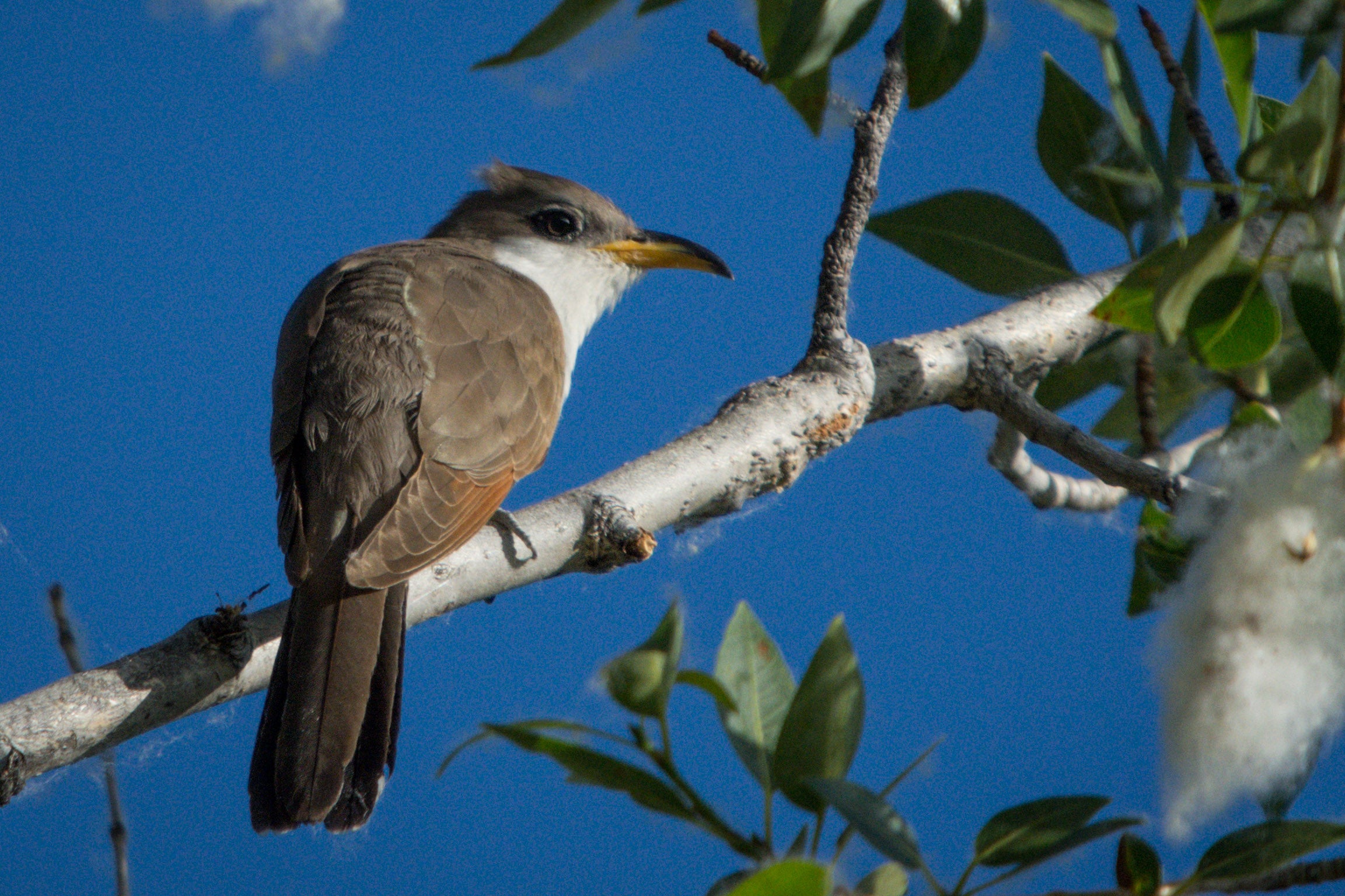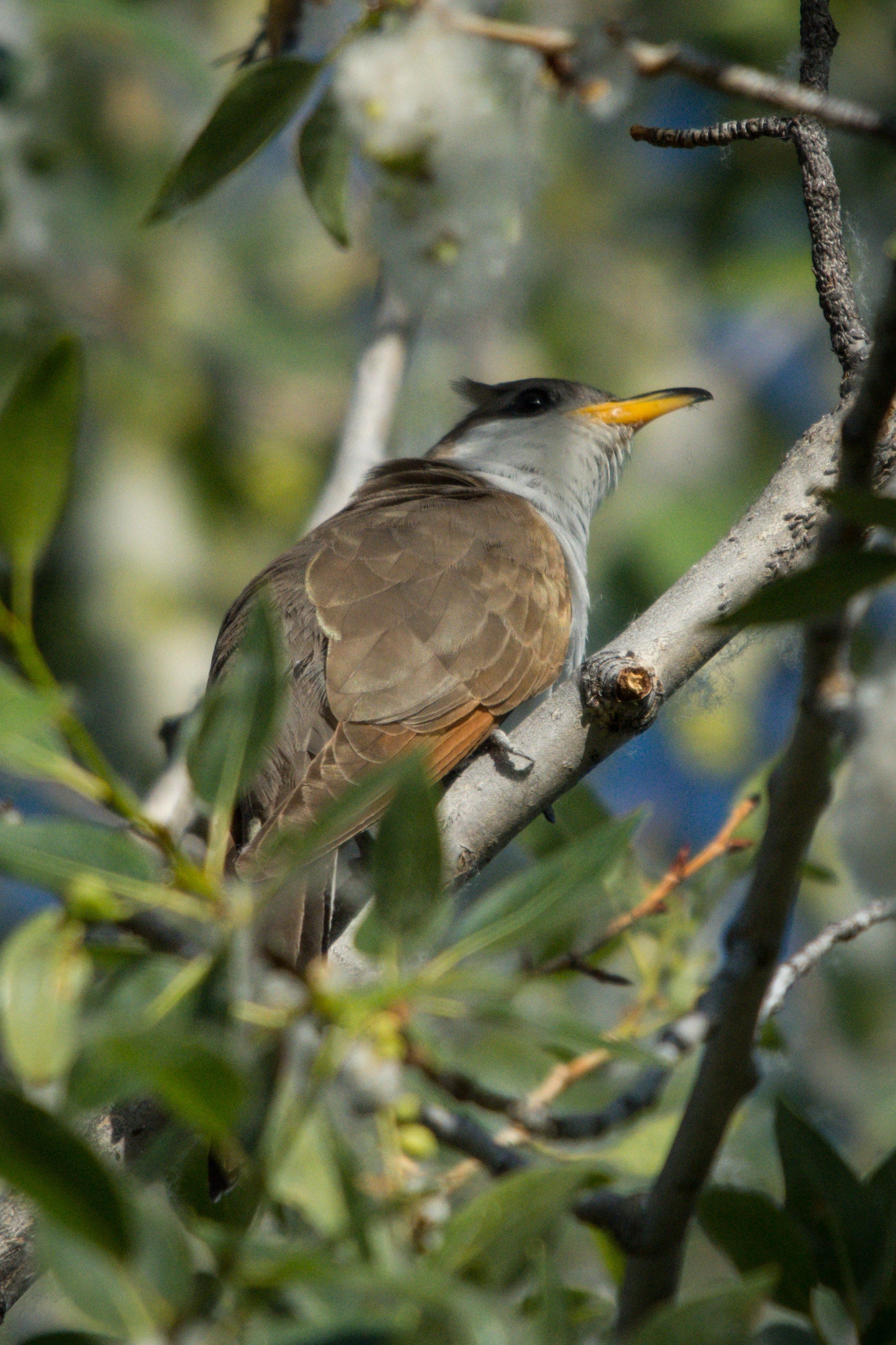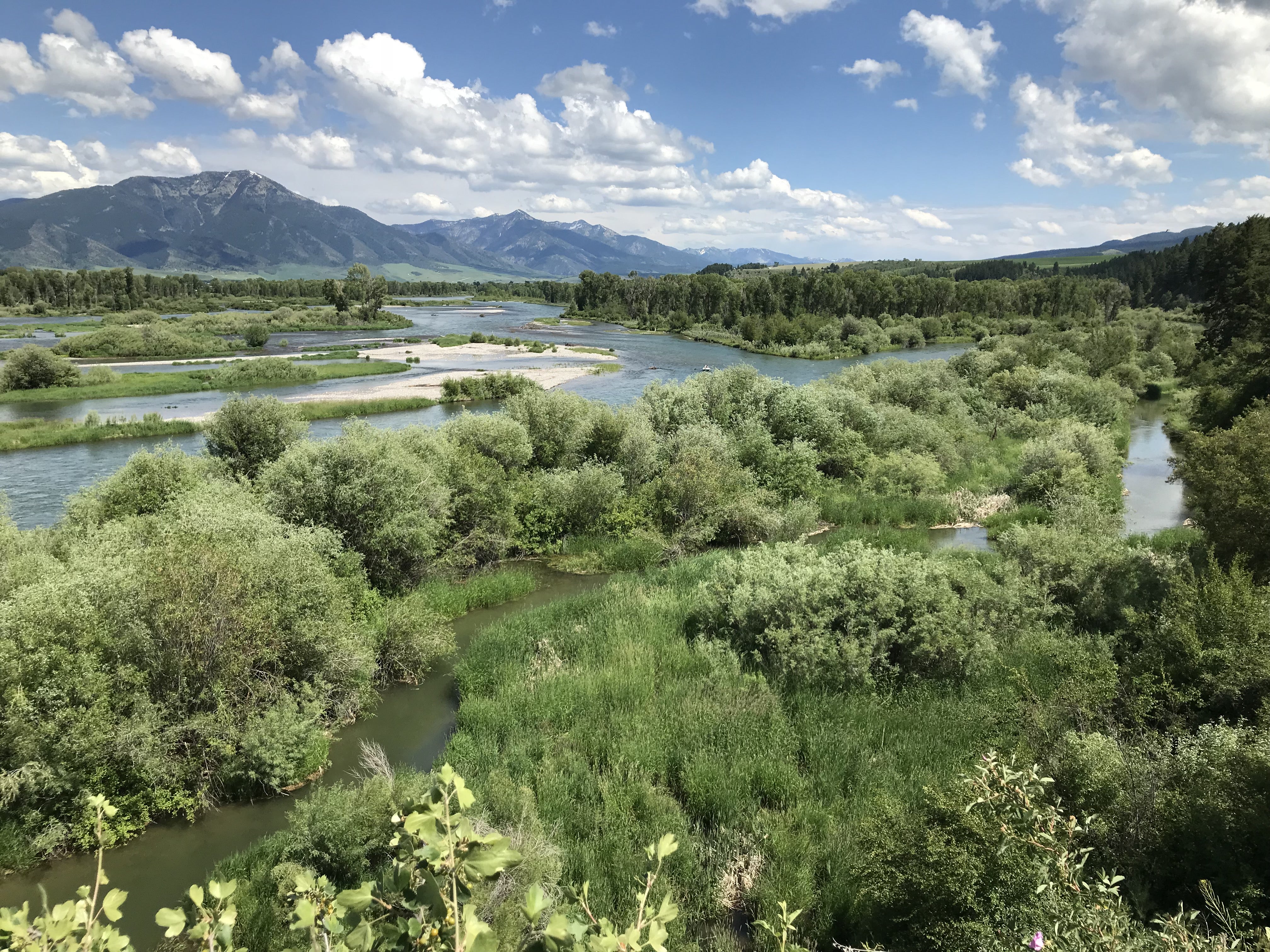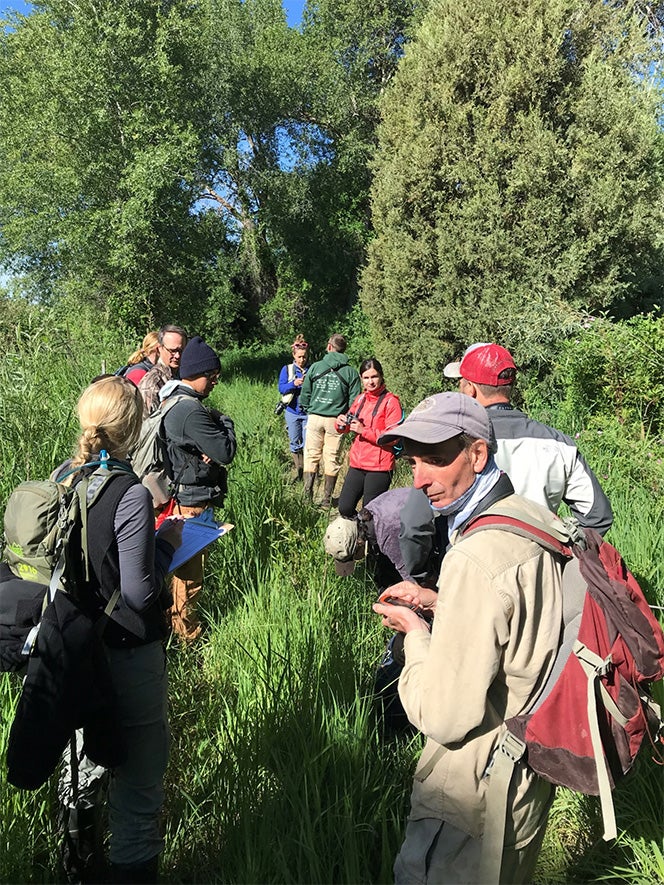By Stephanie Coates

A running joke on the cuckoo crew was asking each other “Are cuckoos even real?”. The answer, of course, is yes, but when you’re straining to hear an intermittent and rare “kok kok kok kowlp” of a cuckoo or catch a flash of white belly or rufous wing patches, and possibly a little delirious from mosquito-induced blood loss, the mind plays tricks. Between mid-June and mid-August we visited sites across the southern half of Idaho, homing in on areas with past cuckoo detections and where the best available science predicts we might find them: wide riparian zones characterized by cottonwood galleries and an understory component of willow and other shrubs. In the summer of 2019, this resulted in visits to more than 60 unique sites within which we surveyed over 3,000 points in search of cuckoos.
I saw one. The memory feels like a dream. Or maybe a hallucination.
Part of the challenge is that cuckoos are notoriously hard to detect. They seldom call, by some estimates maybe once per hour, and even when solicited by a playback (which requires a federal permit) cuckoos have a reputation for stealthily approaching and then silently watching eager surveyors from an unseen perch. On top of this, Idaho is at the northern extent of their range and, as a threatened species, they’re rare to begin with. One last thing: cuckoos are…weird. They’re somewhat nomadic, lured to new territory by pulses of hatching caterpillars and other insect prey. Sometimes they show up hundreds of miles away from where they’re expected (e.g., this summer in Anchorage, Alaska!). True to the style of the cuckoo species, they have an accelerated breeding biology; ~10 days of incubation and ~8 days before chicks fledge, a snapshot in time that we’re trying to catch. For reference, the incubation and period to fledge for the similar-sized American Robin are both approximately 14 days. These things make our job difficult but are also why research is so sorely needed.

For all the work that has been conducted on cuckoos in California and Arizona, where the western population is most concentrated, only some of the information is translatable to cuckoos in Idaho.
We need widespread, long-term studies in order to understand what’s happening with cuckoo populations here.
How many cuckoos regularly breed in Idaho? How might a wet or dry year affect their nomadism? We use habitat models to predict the likelihood of cuckoo presence and help us select sites, but those models are based on cuckoo data from other states. What does suitable habitat look like for cuckoos in Idaho?

We’ve already made great strides since Tempe Regan, IBO alumna/rockstar and former cuckoo project lead, got things rolling at a broad scale last year. Now we’ve got solid data from Idaho to start working with and to share with experts (*the information we share is limited when data is collected on private property), which will help us get a handle on this elusive species. Next year we plan to be out surveying again, and we’re always looking for extra eyes and ears to join us on surveys. The mosquitos aren’t that bad. Cuckoos exist. Come survey with us! Email StephanieCoates@boisestate.edu for information on getting involved.

This article is part of our 2019 end of the year newsletter! View the full newsletter here, or click “older posts” below to read the next article.